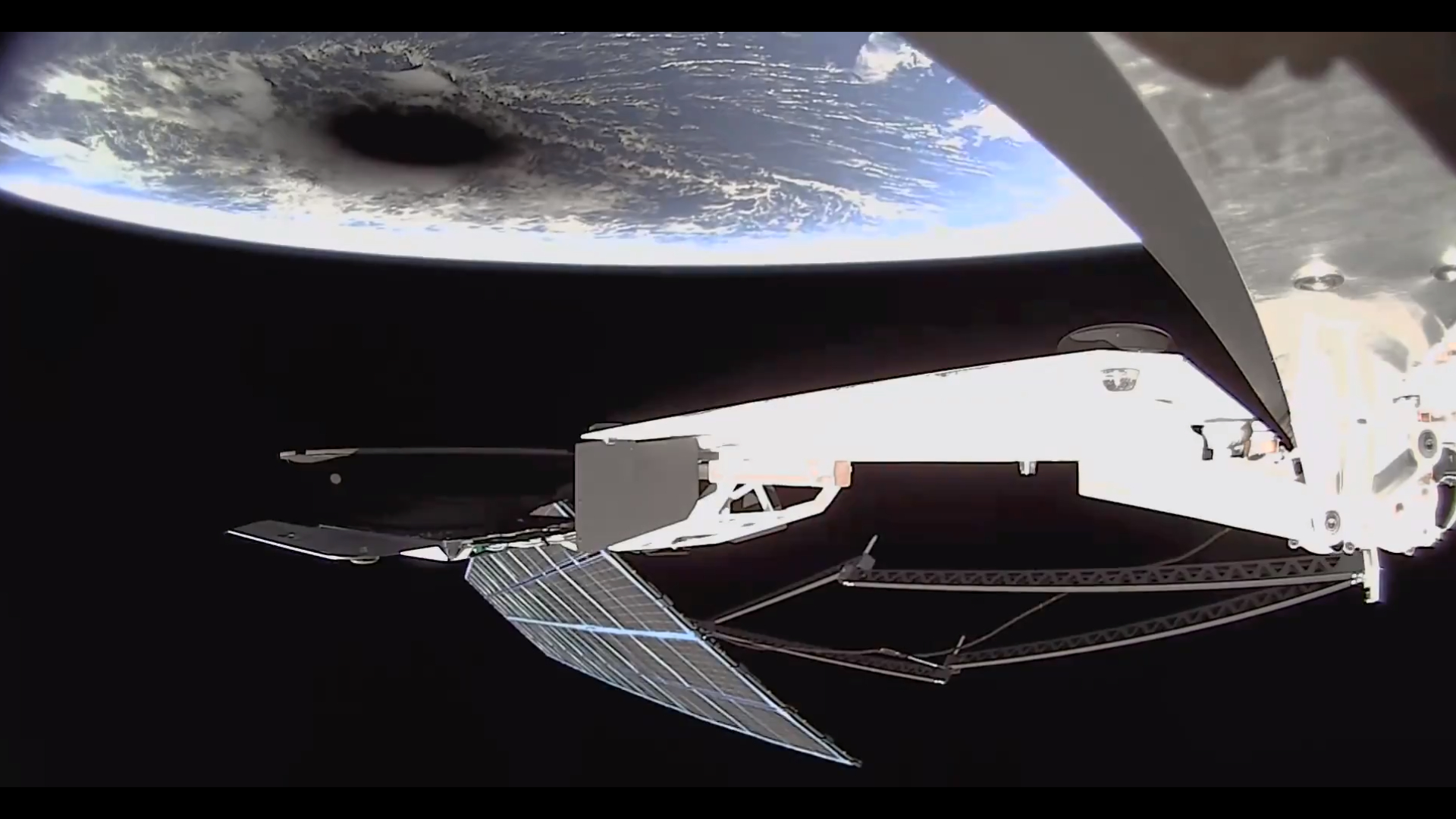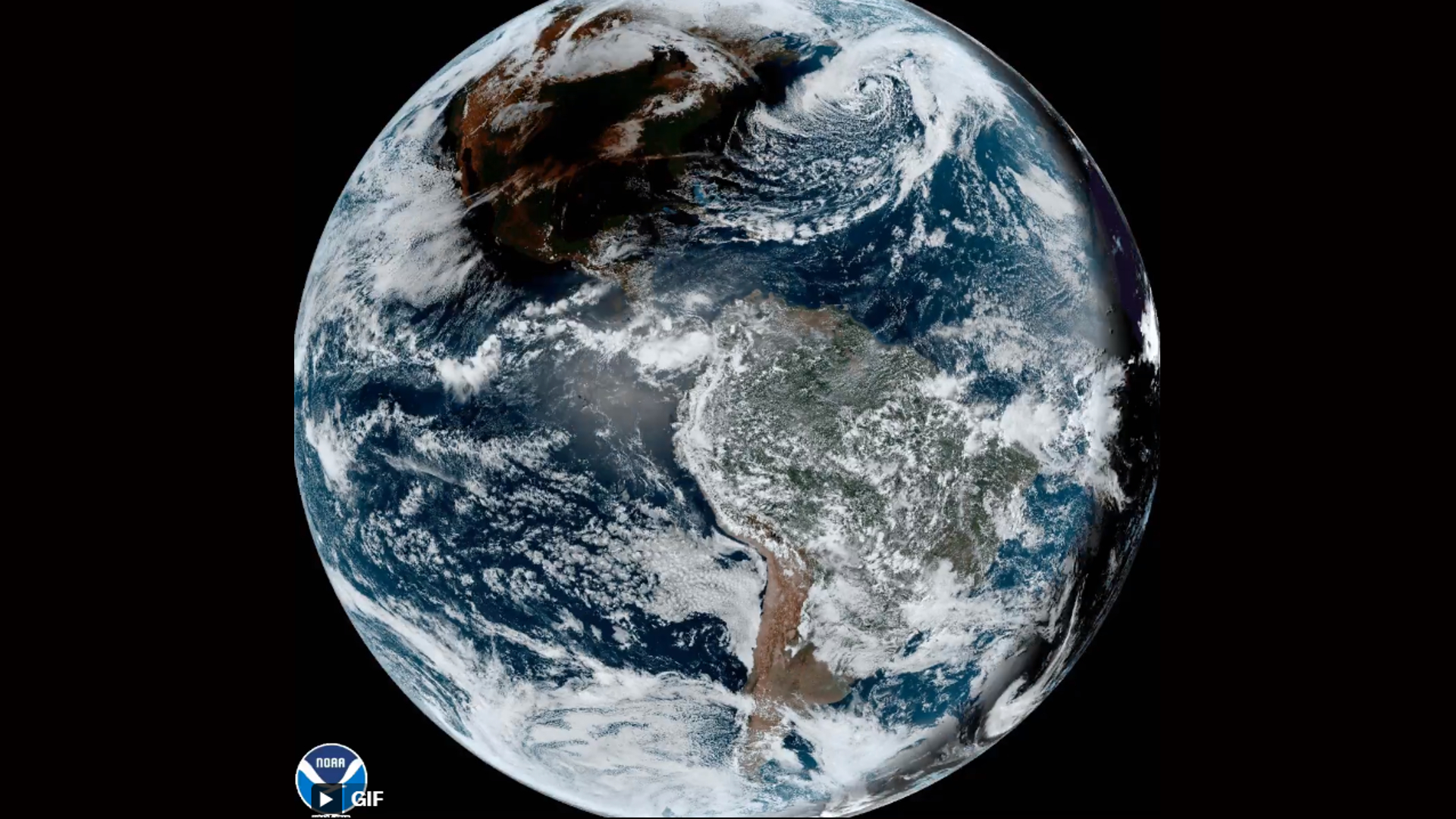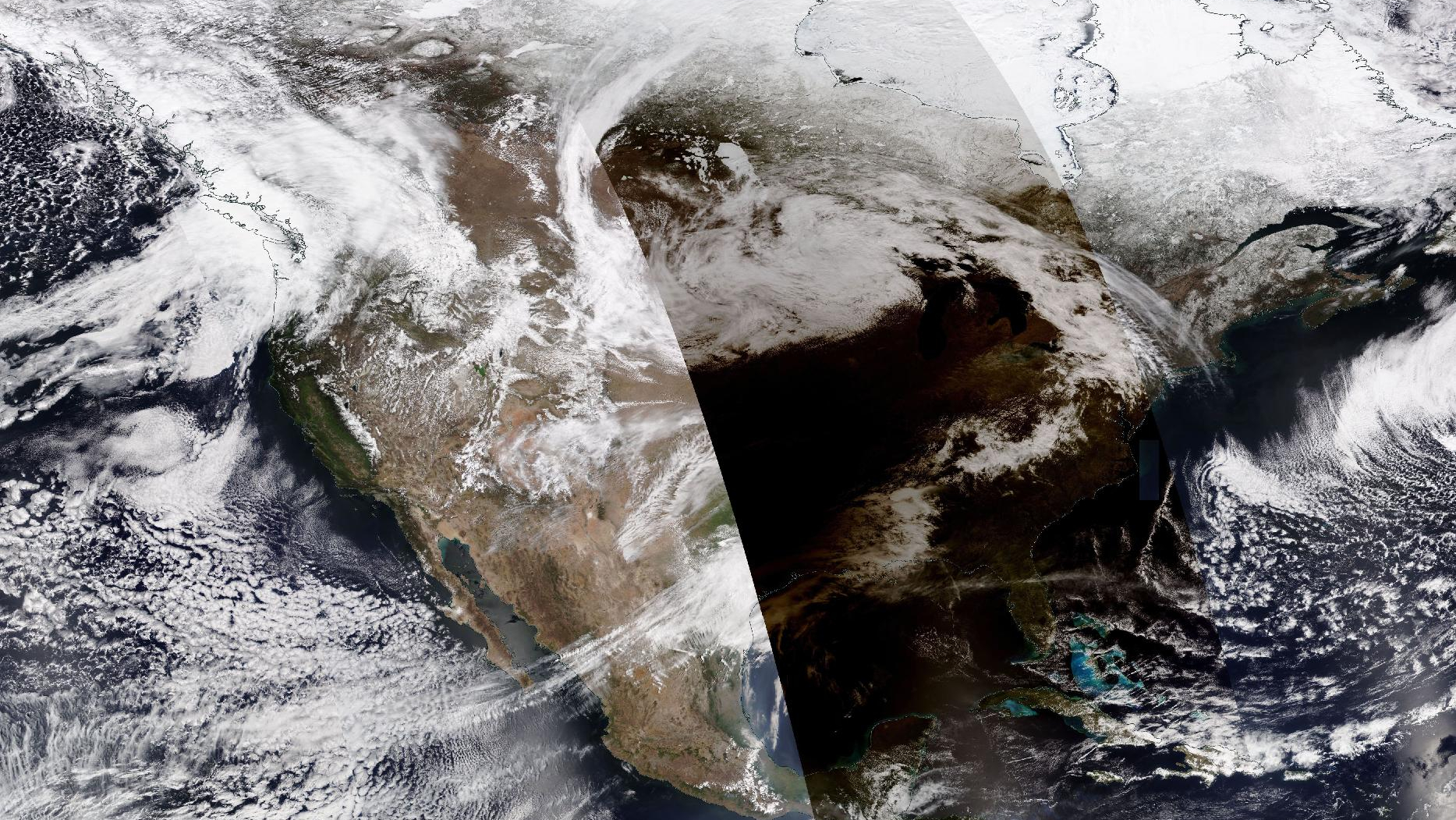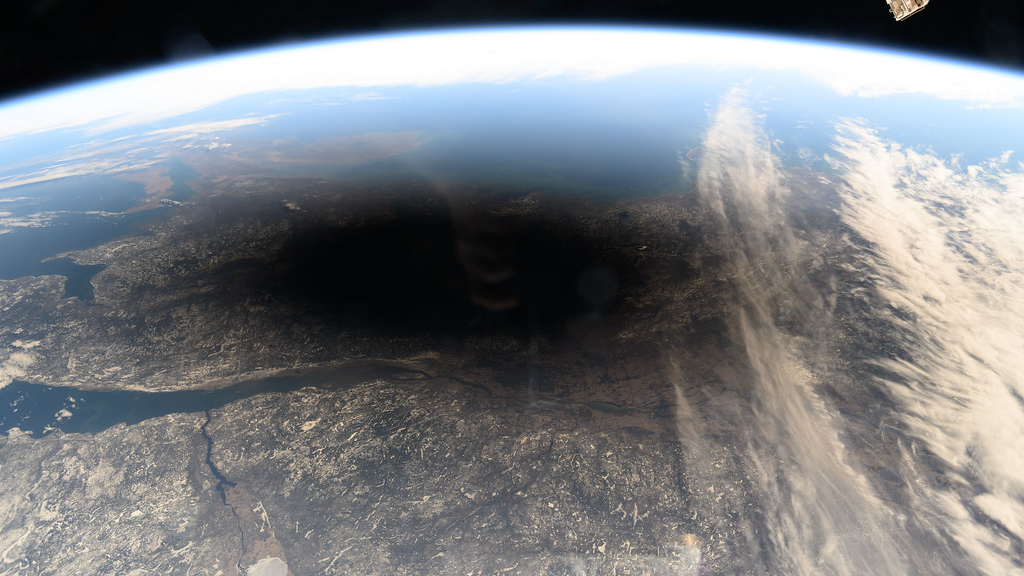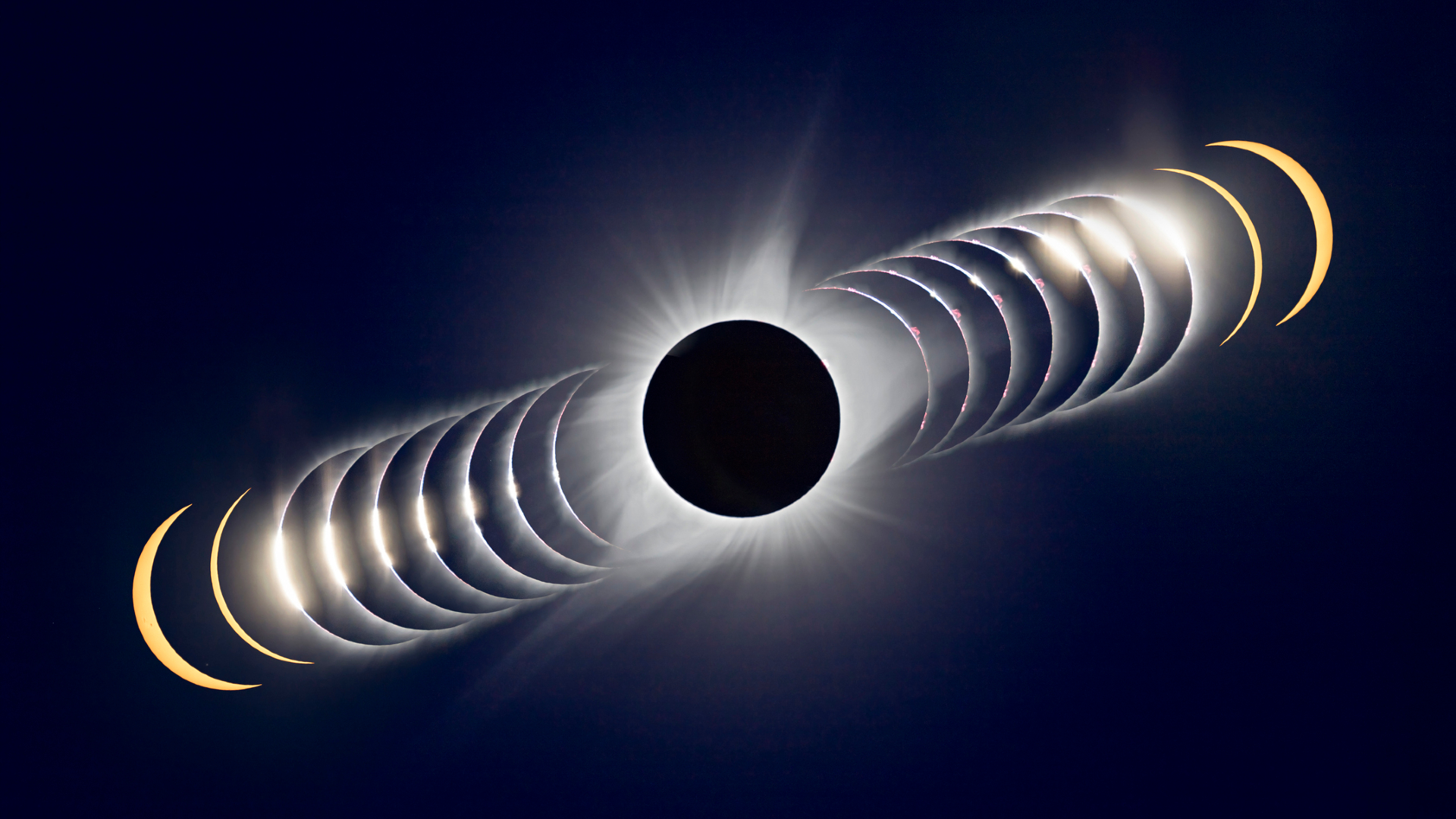Satellite views of solar eclipse 2024: See the moon's shadow race across North America (video, photos)
Time to track a shadow of the moon.
Satellites saw the moon's shadow from space on Monday (April 8).
The 2024 total solar eclipse was visible in parts of the United States, Canada and Mexico on that day, thrilling millions of spectators across North America — and from space, satellites could see the shadow of the moon falling across those regions in real-time.
The National Oceanic and Atmospheric Administration (NOAA) showcased the resulting photos, taken with the organization's Geostationary Operational Environmental Satellites (GOES) series. For example, the imager on the GOES-16 satellite tracked the moon's shadow using its advanced baseline imager.
SpaceX's Starlink satellites also saw the show from above North America — in between their normal jobs of transmitting broadband to remote areas.
Related: Will the 2024 total solar eclipse be visible from space?
NOAA's GOES-16 weather satellite in geostationary orbit tracked the moon's shadow from a wider view, showing the entire globe of the Earth.
Meanwhile, the NOAA-20 weather satellite managed to show the difference between the eclipsed portion of North America and how it usually looks during non-eclipsed time, from its own vantage point in Earth orbit.
Breaking space news, the latest updates on rocket launches, skywatching events and more!
Expedition 71 astronauts on the International Space Station (ISS) caught the shadow racing across our planet too, as the moon completely blocked the sun from Earth's perspective.
Michael Barrett, a NASA astronaut with Crew-8, previously said equipment on board the ISS right now is also better than what was available on the station during its last opportunity to catch a North American eclipse in 2017.
More satellites will join this group in the coming years. NOAA's GOES-U will fly on June 25, if schedules hold, to examine the corona, or outer atmosphere, of the sun. NOAA's Space Weather Follow On L1 (SWFO-L1) is also expected to launch in 2025 to fly a million miles from Earth and examine space weather, aka the effect solar activity has on our planet.
If you're looking to observe future solar eclipses on Earth, we have you covered. Our guide on how to observe the sun safely guide tells you what you need to know to look at the sun. We also have a guide to solar eclipse glasses, and how to safely photograph the sun if you'd like to get practicing before the big day.
Submit your story photos! If you capture a photo of the April 8 total solar eclipse or any of these strange effects and would like to share it with Space.com's readers, send photos, videos, comments, and your name, location and content usage permission release to spacephotos@space.com.

Elizabeth Howell (she/her), Ph.D., was a staff writer in the spaceflight channel between 2022 and 2024 specializing in Canadian space news. She was contributing writer for Space.com for 10 years from 2012 to 2024. Elizabeth's reporting includes multiple exclusives with the White House, leading world coverage about a lost-and-found space tomato on the International Space Station, witnessing five human spaceflight launches on two continents, flying parabolic, working inside a spacesuit, and participating in a simulated Mars mission. Her latest book, "Why Am I Taller?" (ECW Press, 2022) is co-written with astronaut Dave Williams.
